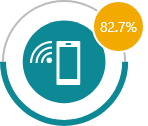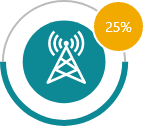BACKGROUND
According to WHO estimates, 133,000 people newly developed TB in Tanzania in 2020, of which 85,597 cases got notified (Global TB report, 2021) [1] . With nearly 28,000 of all people with TB also infected with HIV, Tanzania is included in the list for the top 30 TB/HIV high burden countries. [2] Children account for nearly 16% of all cases, and many also suffer from TB-HIV coinfection. [1]
Tanzania has achieved a treatment coverage of 64% of all people living with TB in 2020 and the TB case fatality ratio stands at 22%. 62% of the children (aged < 5 years) that are household contacts of bacteriologically-confirmed TB cases have also been put on preventive treatment. [1]
In 2020, the COVID19 pandemic has impacted the TB case notification in Tanzania, however, with NTP’s efforts, it has steadily improved through 2021 to reach above the 2019 average figures of monthly notification.
Tanzania’s National Strategic Plan (NSP) VI (2020- 2025) describes the country's strategy to achieve the Sustainable Development Goals (SDGs) by 2030 and WHO’s End TB Strategy targets by 2035. To capitalize on success and achievements from the previous NSP, the new NSP VI continues to prioritize areas such as - Expanding access to quality TB diagnostic services including the adoption of new, innovative technologies; Eliminating TB case finding gaps particularly among vulnerable populations; Increasing treatment coverage by effectively addressing barriers to access and utilization of services; Increasing the detection and treatment coverage of DR-TB and MDR-TB; and, Continuing to strengthen collaborative TB/HIV activities, management of comorbidities, and TB infection prevention for high-risk populations. [3]
Tanzania uses DHIS2 Tracker as the tool for TB notification, called the electronic TB and Leprosy (ETL) platform and currently, all the data is captured in case-based record form. The current DHIS2 system has been developed (and maintained) with support from The Global Fund from 2017-18 and the platform operationalization and M&E is funded by USAID. Data for both DR and DS TB is entered, and 3 tracker programs are used for TB reporting – TB register, MDR TB register, and Culture & DST register.
Additionally, to complement the existing national HMIS data systems, the TB Data from DHIS2 is available with other program indicators in the DHIS2 National Data Warehouse, enabling comprehensive data review and analysis of TB data nationally.
It is empirical that technology penetration plays a vital role in enabling the evolution of information systems from paper to digital solutions. As per 2021 figures, about 82.7% of the population has a cell phone, and nearly 59.6% use smartphones. Internet penetration stands at 25% in the country. Enhancing digital inclusion in Tanzania is essential, given that access to reliable and affordable connectivity is a foundational step in maximizing the impact of deploying digital technologies on the government’s development aspirations. [4]
Apart from implementing the DHIS2 platform, the country is also leveraging other digital innovations for better data collection and data use for positive programmatic outcome as given below:
Tambua TB is a self screening USSD application (using a quick code or Toll-free number), that aids in general TB education for the clients, self-screening and patient follow-up. It has been integrated into DHIS2 ETL in 2019. [5]
99DOTS is a SMS communication system for treatment and follow-up of both Susceptible and MDR-TB patients in the mining areas. [5]
Based on the multi-stakeholder discussions, interviews and independent research, and guidance from the National TB Program, this assessment report is an attempt to describe the current capacity and identified gaps/ challenges in the digital ecosystem of TB surveillance. The report shares strategic recommendations for developing a comprehensive case-based surveillance system in the country while leveraging the existing infrastructure, in-house capacity, and assets.

STATUS OF CASE BASED TB NOTIFICATION
In 2014, Tanzania adopted DHIS2 aggregate platform as the national system for reporting of TB notification data, which was later transitioned in 2018 to the use of DHIS2 tracker system, called DHIS2 ETL (electronic TB and Leprosy platform). This system was developed with support from USAID and The Global Fund, and the technical support for changes and customizations is offered by the USDM (University of Dar es Salaam) and HISP Tanzania (country affiliate of the University of Oslo). Manual registers are maintained at the health facilities for capturing all TB specific data and the data for patients diagnosed positive is then entered from the facility in the DHIS2 tracker on a monthly to quarterly frequency. For some facilities that do not have the hardware and infrastructure to perform data entry, all the data is compiled and shared with the district, where case-based data is entered to DHIS2 tracker for these facilities.
This system also has an integrated dashboard that was incorporated in 2019 and is accessible from all user of the system, filtering data as per the user’s authority and level of access.
Tanzania is one of the pioneer countries to adapt and implement WHO’s standard DHIS2 TB surveillance tracker template, in their national DHIS2 ETL system in 2014, and it is now successfully receiving case-based data from all districts across the country.
NTP’s collaboration with the University of Dar-es-Salaam is a unique example of using local resources to ensure sustainability of the implemented solutions, and same has allowed the system to grow each year, and this partnership has been recognized at various platforms as a best practice use case
Tanzania is also implementing a pilot project of digital technology use for supporting patients with treatment from a distance to allow more flexibility in TB care delivery (Unitaid-funded ASCENT project). The pilot aims to test the implementation of 3 digital technologies: Smart Pill boxes, Video supported treatment and Medication labels/sleeves. This approach helps the health workers to have a direct access to patient’s treatment data in real time and ensures a more robust adherence to the regimen advised.

ELECTRONIC TB NOTIFICATION DATA COLLECTION AND USE
| TARGET | CURRENT SCALE | COLLECTION TOOLS | DATA TYPE | DATA USAGE | |||
|---|---|---|---|---|---|---|---|

National Level
|
Data Not Collected at this level
|
DHIS2 Dashboard | |||||

Regional
level
|
31 | Data not collected at this level | DHIS2 Dashboard | ||||

District
level
|
184 | 184 | DHIS2 Tracker | Case Based | DHIS2 Dashboard | ||

Facility level
|
3500 | 500 - Direct data
entry to DHIS2
3000 – Paper records sent to district |
DHIS2 Tracker, Manual registers |
Case-based | DHIS2 Dashboard | ||

Community Level
|
Data not collected from this level | No data usage at this level | |||||

CASCADE OF CARE MONITORING
PRESUMPTIVE SCREENING
TB Testing
Treatment Initiation
Treatment Monitoring
Treatment Outcome
Contact Tracing






| KEY DATA VARIABLES | Yes/No |
|---|---|
| Demographic details (Age, DOB, Gender) |

|
| Address and contact details (Country, Division, District, House address) |

|
| Geolocation (GPS coordinates of the household) | |
| Contact details (Phone number/Mobile number, WhatsApp, Email etc.) |

|
| Health Facility address |

|
| Type of health facility (Public, Private etc.) |

|
| Site of TB (Pulmonary, Extra-pulmonary) |

|
| Type of diagnostic test (Microscopy, GeneXpert, TruNaat, CXR, etc.) |

|
| Date of test result |

|
| Drug susceptibility (DSTB, DRTB) |

|
| Treatment Regimen |

|
| Treatment start and end date |

|
| Co-morbidity (HIV, Diabetes, COVID-19 etc.) |

|
| Treatment monitoring/adherence |

|
| Treatment outcomes |

|
| KEY INDICATORS | Yes/No |
|---|---|
| Presumptive screening (proportion) |

|
| Treatment initiation (proportion) |

|
| Treatment monitoring/adherence | |
| Treatment outcome (proportion) |

|
| Spatial distribution of TB notification |

|
| Age-group & sex wise aggregate numbers and proportions notified |

|
| Basis of diagnosis wise aggregate numbers and proportions notified |

|
| Type/site/drug resistance wise aggregate numbers and proportions notified |

|
| Provider source-wise aggregate numbers and proportions notified |

|
| Comorbidity wise aggregate numbers and proportions notified |

|
| Key-population wise aggregate numbers and proportions notified |

|
| Estimate/Target wise notification/treatment coverage (proportions) |

|
| Provider-type disaggregated treatment outcomes (proportions) |

|
| Comorbidity disaggregated treatment outcomes (proportions) |

|
| Key population disaggregated treatment outcomes (proportions) |

|
 Digital
(aggregated)
Digital
(aggregated)
STATUS OF ELECTRONIC CASE BASED TB SURVEILLANCE
Electronic System For Case Based TB Notification
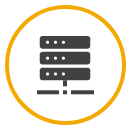
DHIS2 ETL (Tracker)
Lowest Unit For TB Notification Digitisation
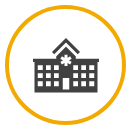
Facility level
Stage Of Notification

Diagnosis (confirmed cases)
Level Of Access And Use Of TB Notification Data
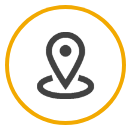
Facility level
Private Sector Notification

Private health facilities also have access and reports cases in DHIS2 ETL platform
Frequency of digitization of TB notification
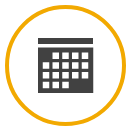
Monthly to Quarterly
Mode Of Follow-Up With Notified Cases
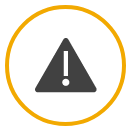
Physical visits and Phone calls by Community Health Workers
Scale Of Implementation
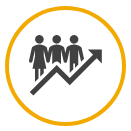
National level
Contact Tracing For TB Notified Cases
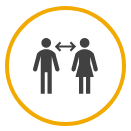
Yes (Aggregate data)
Multi-Channel Enablement
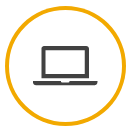
Only web based reporting
Govt. order for mandatory TB notification
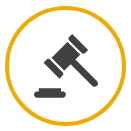
Yes
PRIVATE SECTOR NOTIFICATION

Private sector reports case based records of all TB patients on treatment, directly in the DHIS2 ETL application. Out of the total TB notification in the country, nearly 19% is contributed by the private service providers.
COUNTRY IT CAPACITY
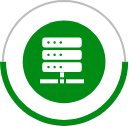
Country Server
The application is hosted centrally by the HMIS division of Ministry of Health (MoHCDGC)
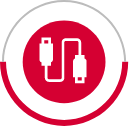
Interoperability
Data export and APIs are available for integration of the DHIS2 ETL platform with other systems.
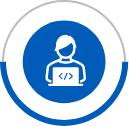
Country IT team
NTP has a shared ownership of DHIS2 ETL platform with MoH, and takes technical support from University of Dar-es-Salaam.
CURRENT RESOURCES AVAILABLE
The Global Fund has an active TB grant of USD 42 million for Tanzania till December 2023, with the principal recipient being Ministry of finance and Planning, where nearly USD 8.2 million has been disbursed.
Funding of USD 350,000 is available for extending the current application to mobile version; incorporating the entire cascade of care; strengthening private sector notification; contact tracing and community led monitoring.
Another 6 million is present with the country for system implementation and M&E support.
Funds of nearly USD 200,000 are also available to bear the ongoing recurring costs like hosting, maintenance support and project management.

MILESTONES ACHIEVED AND ROAD MAP
2014
DHIS2 aggregate platform introduced as the national TB notification system
2012
Data entry in eTB manager scaled to 30 sites
2017
DHIS2 ETL (Tracker) pilot and roll out
2018
Transition from aggregate to case-based reporting with DHIS2 ETL, country wide scale up
2019
Incorporation of WHO TB dashboards on DHIS2 ETL platform
2020
Development of a common TB register for both and DS and DR TB culture
2021
Development of DHIS2 tracker Android application and roll out for real time data entry
2022
Pilot of community screening module with partner agencies, integration of DHIS2 with GxAlerts

OTHER COMPLEMENTING DIGITAL TOOLS
| Purpose | Tools | Channel | Developed By | Supported By | Scale |
|---|---|---|---|---|---|
| Digital Adherence | Everwell Hub (99 DOTS), Tambua TB | SMS and Web application | Everwell | KNVC, USAID | Tambua TB – National Everwell - Pilot |
| Logistic Management Tool | eLMIS | Web Application | Global Health Supply Project | USAID | National |
| Laboratory Information Management | GxAlert | Web Application | Cepheid | USAID | 259 GeneXpert diagnostic sites |
| Community Led Monitoring (CLM) | OneImpact | Mobile App | Stop TB Partnership | USAID | Pilot |
| Contact Tracing | Nil | NA | NA | NA | NA |

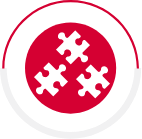

KEY CHALLENGES

The staff designated at the data entry points is inadequately trained in using DHIS2 tracker and this raises concerns for the reliability of data that is entered.

With the electricity and internet conditions being very unreliable, real-time case-based data entry remains to be a challenge.

In the current setting, data outputs at the facility level have a limited usage and measures to keep a check on data quality are also not well realized, which primarily prevails due to an insufficient data analysis and data use skill at this level

Availability of desktops and laptops for data entry is also inadequate for direct data reporting from facilities, and as a result of this, some facilities rely on data entry from districts, and it adds to delays and quality issues.

With the connectivity issues, the facilities sometimes have a complete dependency is on generation of data exports for usage in decision making, which gets challenging.

The system is presently not integrated with the auxiliary systems like Hospital EMRs, GeneXpert and Community monitoring tools, which raises the data entry workload on the staff.
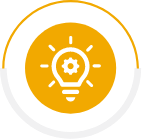
NTP VISION
- ❖ Transitioning to real-time case-based data entry from all facilities.
- ❖ Incorporating the entire cascade of TB care, and modules for contact tracing and community led monitoring.
- ❖ Development and implementation of an android app to support data entry.
- ❖ Improvement in data quality (accuracy, validity and precision) and reducing duplicates.
- ❖ Advanced dashboards for access to more granular data at all administrative levels, integration of GIS features in the application and capacity building for improving data use.
- ❖ Integration with Community Led Monitoring (CLM) initiatives and National EMR system of HMIS.
- ❖ Direct integration of DHIS2 with Lab information systems, including GeneXpert machines.

RESOURCES NEED
Based on multi-stakeholder discussions, country feedbacks and recommendations for full-filling country’s vision, we have put together an estimated investment requirements and areas needing support for provisioning of a comprehensive case based digital TB surveillance system
Hardware and Infrastructure :

Mobile Devices (for data collection): Tanzania has 3500 TB facilities and to provision mobile device for every facility for case-based TB surveillance, USD 525,000 will be needed assuming USD 150 per mobile devices. If needed, additional budget can be booked for community settings.

Tablet (for data use):Tanzania has 184 districts and 31 regions. To promote active data use, each district should be given a tablet which would cost roughly around USD 43,000 assuming USD 200 per Tablet devices.

Internet: In case WiFi is not available in each facility, then mobile internet cost of around USD 1,114,500 should be considered (assuming USD 100 mobile data cost for the entire year per facility, district and regional user).

Server: Based on the current volumes of new cases, Tanzania would need an investment of USD 20,000-30,000 for next 3 years for server and server maintenance.
Note: Existing devices available through other health programs can be leveraged. In that case, the above-mentioned costing can be accordingly considered.
Software Development :

Based on various multi-stakeholder meetings and given the fact Tanzania already have a strong foundation of DHIS2 case-based reporting nationally, around USD 700,000- 800,000 should be budgeted for a comprehensive TB surveillance system and analytical dashboard for data use.
Capacity Building and Implementation :

After the software development, a dedicated pool of technical resources will be needed to support platform administration, data management and support. A team of 4-6 skilled resources attributing to a cost of around USD 48,000-72,000 per annum should be budgeted (or USD 144,000-216,000 for 3 years assuming USD 1,000 per month per resources). Additionally, reskilling of the current IT team should be budgeted.

Training : This would involve training material development and onsite and remote training of the trainers. A 1-day training should be planned for each of the 184 districts, which could cost roughly USD 100 per training amounting to USD 18,400. Also, a dedicated trainer should be budgeted in case there is none. E-training options with necessary modules also need to be considered
TOTAL investment of around USD 2.5 – 3 million for 3 years will be needed on developing a comprehensive case-based digital TB surveillance system for Tanzania
Disclaimer: The above budget is a function of number of facilities, districts and regions and expected volume of data. This only provides a ballpark figure of what is needed in terms of budget.

Recommendations
Following are some of the key recommendations suggested based on the findings of this assessment of country’s digital ecosystem and infrastructure:

Strategic Costing Plan
As a first step it is important for the country to create a comprehensive costed action plan for development, implementation and scale up of the TB case-based surveillance system.
Based on NTPs vision and the recommendations for improvements , the plan should clearly define targets with actionable interventions and funding requirements supported with a detailed work plan with timelines. The plan will help the country to assess and monitor the progress and to mitigate risks.
Tentative timeline: Month 0-1

Implementation and scale of Case Based Notification systems
The NTP has already established a strong DHIS2 tracker environment which has the core infrastructure in terms of database and deployment environment. Also, it has built the DHIS2 expertise and capacity which acts as a strong foundation for executing the vision of implementing a comprehensive and integrated real-time case-based TB surveillance and notification system.
It is recommended that this existing capacity is leveraged for expanding the DHIS2 tracker app. While the current tracker development has been planned to cover treatment initiation data capturing from all facilities on a monthly to quarterly frequency, the system should be expanded to capture the entire continuum of care for both DR and DS TB, including presumptive screening, referral, treatment initiation, treatment adherence & outcome, and contact tracing in real-time.
The solution architecture should support adding all the above components in phases supported with versioning to ensure seamless upgrades and continuity.
Some of the existing templates already built on DHIS2 tracker systems currently being used by other countries such as WHO’s prevent TB tool or other DHIS2 tracker-based systems can be explored for fast-tracking the software development processes. [6]
Tentative timeline: Month 0-12

Mobile App
One of the challenges reported by the NTP is the infrastructure inadequacy and lack of availability of real time data for stakeholders. One effective way to overcome this is to support the current data collection processes by introducing a mobile application, which is in line with the country’s efforts of improving the overall digital ecosystem.
This would also ensure that the data structures are consistent. Also, the app is supported with a configurable set up to support any updates / changes to the program.
As a recommendation, the latest DHIS2 mobile app version which has additional features on data collection, security ,offline data collection, encryption ,version management etc should be extended for use even for aggregate data reporting, specially from facilities with limited IT infrastructure should be reviewed.
Additionally, the DHIS2 mobile framework uses open-source technologies like Java, Postgres, React and Android, which can be easily supported by country IT teams. It also follows the standard best practices of mobile development like version management , data encryption etc which make this a more robust solution. [7]
Tentative timeline: Month 6-12

System Integration
One of the challenges highlighted by NTP is leveraging the data collected from multiple sources into the main DHIS2 systems as a central system for effective use.
The current DHIS2 platform and infrastructure needs to be extended to support integration with external systems like GenXpert, TruNat, Digital X-Ray outputs, Pill boxes and other adherence tools which help in using the data effectively for the patient continuum of care as highlighted by the National program.
Recommended exchange / ETL tools like Talend , Informatica which include these features make the data management task much easier and simultaneously improve data warehousing should be evaluated. [8.1] [8.2]
The DHIS2 platforms architecture is easily compatible with these standard tools and processes making this an effective solution. [9.1] , [9.2]
The data exchange process should follow and comply with FHIR , GDPR standards for more secured and seamless data exchange.
Tentative timeline: Month 12-18

Data Use
The NSP clearly emphasizes on the importance and need for improve data use. This can be made possible by making case-based TB data and patient line listing available at the lowest level health functionary involved in TB care.
Building on the current DHIS2 visualization module which offers a comprehensive dashboard for reviewing of program and data indicators, additional features of pivot table, event reports which support dimensions, data aggregation reports and individual line lists and with timeline views are extremely useful.
Once a robust data analytics and data use model has been established with the current DHIS2 and other systems, then a more advanced analytical dashboard should be designed linked to the new case-based TB surveillance system that is already being planned.
To achieve this , apart from the standard DHIS2 dashboard features and to strengthen and expand the data visualisation scope, making effective use of data for predictive modelling & data science, and for advanced analytics, it is also recommended to use best of the breed tools like Tableau , Power BI which offer these features. The current DHIS2 platform offers APIs which can be connected for these applications and be used as an extended analytical component of the data analysis framework. [10]
Tentative timeline: Month 6-18

Capacity building for application maintenance
One of the main challenges highlighted by the NTP is the ongoing maintenance and enhancements of the platform. Since the application requires regular updates and to ensure effective adaptation and scale up, the system support team requires trained personnel on DHIS2.
Strengthening the NTP team with trained system administrators will help in improving and expediting the planned implementations.
Tentative timeline: Month 0-6

Additional data capturing mechanisms
With the new tracker-based system being introduced, making sure that paper-based patient data is integrated with the DHIS2 tracker systems is crucial. Technical solutions like OCR (optical character recognition) should be considered.
The DHIS2 platform supports reading from these structures. This would help in data upload of all historical data with less difficulties.
Tentative timeline: Month 6-12

E-Learning
To address the challenges with periodic training of facility level staff to orient them on using VITIMES and e-TB for direct data reporting, the MOH must engage in development of a comprehensive e-Learning module for app training.
While DHIS2 offers standard training modules on the application , training tools like Moodle [11] built on standard Learning Management System (LMS) framework can be reviewed for application rollouts.
Additionally, for training and updates on the latest manual of procedure and continued medical education, TB care modules can be developed for Health providers & administrators at facility and district level to develop and enhance M&E competencies for ensuring a consistent program oversight, specially for using the case-based tracker system and other existing applications.
Guide TB platform developed by WHO Philippines is a good example of eLearning module for health staffs involved in TB care.
Tentative timeline: Month 0-3

Patient Interactive Systems
Establishing a direct and secured mechanism for engaging with patient has a potential for drastic improvements by tracking the patients lost to follow-up. Auto generation of notification and messaging by the system through communication channels like Social Media, IVRS and SMS outbound messages should be explored. Open-source applications like Open MRS can be used for these activities. [12]
Tentative timeline: Month 12-24

Data Quality
As part of the standard practice, the application(s) / solutions should follow a set of standard data quality mechanisms or the Data Quality Assurance (DQA) framework which would help in improved data credibility and use.
UIC Code: Having a centralized Unique Patient ID system or leveraging existing national ID supported with an improved search functionality can help drastically reduce the duplication of case-based records.
This should be generated automatically through the case-based TB surveillance system that is already implemented.
Data access control is another such DQA measure that will regulate user’s access to only relevant metadata. It will involve the principle of least privilege (POLP), i.e., user’s access will be determined based on their role in the project. POLP will define and limit what data they have access to and who has that access.
Tentative timeline: Month 6-18

Device Procurement
One of the limitation highlighted by NTP is the need to improve the data collection processes at the facility level. To streamline this, procurement, distribution and maintenance of the required data entry equipment like laptops, mobile/tablet devices should be done on an urgent basis. Improving the current infrastructure at the facilities is crucial for a complete transition to digital notification.
Tentative timeline: Month 0-6

Community Monitoring Systems
As expressed by the NTP, the national TB notification and surveillance system should have also consider data integration with their current social media channels and also explore use of ready-to-use open source CLM platforms like One Impact.
Tentative timeline: Month 6-12

Contact tracing application implementation
To strengthen the TB surveillance efforts of the country and for reaching out to all TB positive individuals, an active focus on contact tracing becomes crucial. The standard guidelines for household screening can be incorporated as a module in the national TB notification tool and be implemented to fast track the country’s efforts to eliminate TB and target the initiation of preventive treatment for all TB contacts.
Tentative timeline: Month 6-12

Strategic Technical Recommendations
Application Upgrades including Server Augmentation & Infrastructure Upgrades : To make sure that systems implementation and scale up of application is supported well, the key need is to have a long-term strategic plan that would cover the technical and operational objectives.
The strategy recommended would cover the following core areas
✓ Technical Upgrades: Based on the architecture, the upgrade would be done with the database, a middleware system, the operating system or the hardware.
Additionally, the architecture should support the integration layer which would be needed for data exchange with other national / external systems. The technologies that need to be brought in and the areas of inter-connection need special focus.
Recommended data system architecture would include updating the version of the current DHIS2 to 2.34 which offers better features on data management , encryption and exchange standards.
Apart from this version 2.34 also supports compliance to GDPR standards and offers more controlled data encryption practises. [13]
✓ Performance Optimisation & Testing : To support the national scale up and implementation strategies it is very essential to have system(s) and application testing done to enable a reliable platform and which also helps in architecture updates and augmentation.
While core teams from the user community who are involved in the testing learn and automatically get trained, Automated System and Application Testing tools like Selenium and Appium also can be considered. Load Testing tools which help in data base sizing and planning need to be adapted for effective planning. [14.1] , [14.2]
✓ Application & System Security Audit
To strengthen the current systems framework and ensuring long term sustenance it is important to have regular evaluation of the security of the information and systems by measuring how well it conforms to an established set of criteria.
These would also include developing a framework which should outline policies in line with recommended standard policies like HIPAA [15.1], [15.2]
• Patient Data Management
• Server & Infra guidelines
Apart from application measures offered by offered by DHIS2 [14.1] [14.2] for patient data security , hosting solutions offered from Azure also cover these as part of their deployment options which can be considered as part of systems hosting. [16]
ACKNOWLEDGMENT
We thank the National TB and Leprosy Program Manager, Dr. Liberate Mleoh and the entire team for participating and engaging in the assessment. We would also like to extend our gratitude to Dr. Emmanuel Matechi and Mr. Immanuel Nkiligi for providing valuable insights into Tanzania’s vision for creating an advanced case-based TB surveillance and notification system.
CONTACT DETAILS
National Tuberculosis and
Leprosy Program,
Government City-Mtumba,
Health Road/Street, P.O Box 743,
40478 Dodoma,
Tanzania
Telephone :
255(0) 262960150
Email : info@ntlp.go.tz
REFERENCES
- TB Data References : https://worldhealthorg.shinyapps.io/tb_profiles/?_inputs_&entity_type=%22country%22&lan=%22EN%22&iso2=%22BD%22.
- TB Data References : http://www.stoptb.org/countries/tbdata.asp.
- TB Data Reference : https://www.usaid.gov/sites/default/files/documents/tanzania_Narrative_TBRM21_TBDIAH_Version_Final.pdf.
- TB Data References : http://btri.portal.gov.bd/sites/default/files/files/btri.portal.gov.bd/page/ a556434c_e9c9_4269_9f4e_df75d712604d/Digital%20tanzanialadesh%20Concept%20Note_Final.pdf.
- Digital Landscape : https://datareportal.com/reports/digital-2021-tanzania?rq=tanzania
- National TB and Leprosy program manual 2020-21 : https://ntlp.go.tz/site/assets/files/1047/ntlp_manual_2020_2021.pdf
- DHIS2 Meta Data Tools : https://dhis2.org/metadata-package-downloads/#tb
- DHIS2 Mobile App : https://dhis2.org/android/
- System Integration Tools ( Talend , Informatica ) : https://www.talend.com/index.php, https://www.informatica.com/
- DHIS 2 API & DHIS2 Data Transformation Services : https://docs.dhis2.org/en/develop/using-the-api/dhis-core-version-235/web-api.html, https://docs.dhis2.org/en/use/user-guides/dhis-core-version-236/maintaining-the-system/importexport-app.html
- Application Training Tool : https://moodle.org/
- OPEN MRS : https://openmrs.org/
- Features of DHIS 2.34 : https://dhis2.org/overview/version-234/
- Performance Tools ( Selenium , Appium ) : https://appium.io/, https://www.selenium.dev/
- HIPAA Compliance Framework : https://www.hhs.gov/hipaa/for-professionals/security/laws-regulations/index.html, https://www.hipaajournal.com/considered-phi-hipaa/
- Azure Hosting Services : https://docs.microsoft.com/en-us/azure/compliance/offerings/offering-hipaa-us

